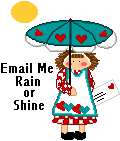![]()
A- Before you begin reading ...
2- Examine the title and consider possible meanings. The title is often a significant clue to help you identify the story's central ideas.
B- To begin reading
...
Read the first paragraph. Try to identify:
* The setting - when and where the story is taking place. If you are unfamiliar with the time or place setting, consider doing some research to familiarize yourself with the setting.
* The point of view - whose perspective is the story being told from?
C- As you read ...
1- Be an active reader. Interact with the story as
you read. Make
Interactive Notes.
2- Try to identify:
- How the plot is developing
- The major and minor characters
- The conflicts, external and internal, and
how they relate to each other
- The importance of setting
- Ideas or images that are repeated to create symbols
and develop motifs
- The tone or mood the author creates. Do these
change?
How does the writer create mood and tone?
3- Ask both personal and critical questions, recognizing differences between the author's opinions and your own.
4- Connect details to expand the picture that the author is painting. Recognize that all words in a story should contribute to the overall impression.
5- Pay particular attention to the ending of a story.
Ask yourself: - why did the author choose
to end the story here?
- what are the central ideas (themes) of the story?
D- Rereading the story...
Be prepared to reread the story or parts of the story to:
- confirm your initial impressions
- answer questions you have
- alter or correct your ideas
E- To conclude your reading ...
1- Talk and listen to others to clarify impressions and interpretations
2- Record personal insights or reactions as a way of
deepening your
understanding
3- Continue to ask questions that extend the meaning of the story.
Remember that the most important questions we are left with, often do not have "right" answers.
4- Examine the author's technique and style or writing.
What traits dominate? How does the author's style contribute to the overall
impressions of the piece?
5- Fit all the parts of the story into a whole by rereading
and
rethinking your ideas.
 ..............Sign
My Guestbook !..............
..............Sign
My Guestbook !..............
